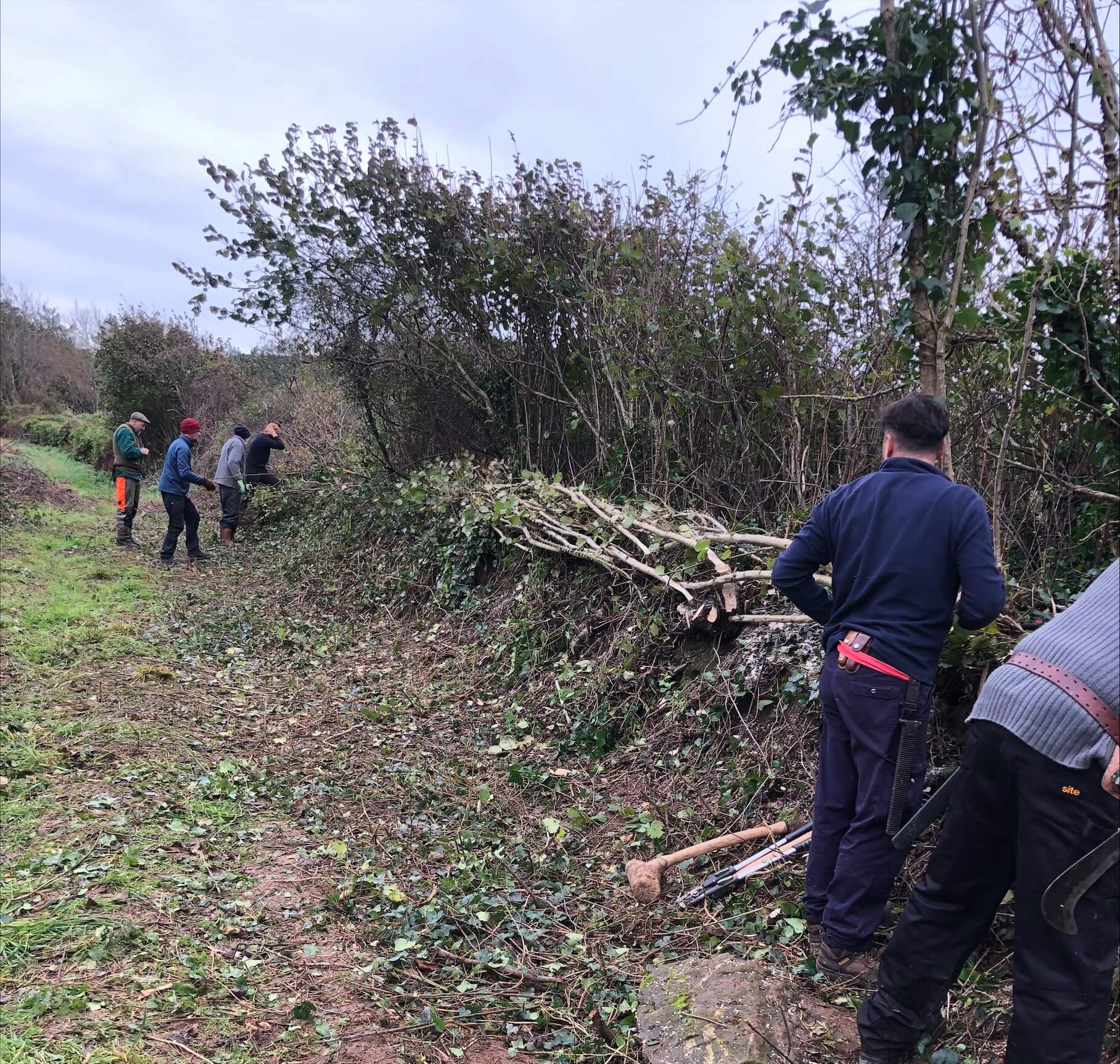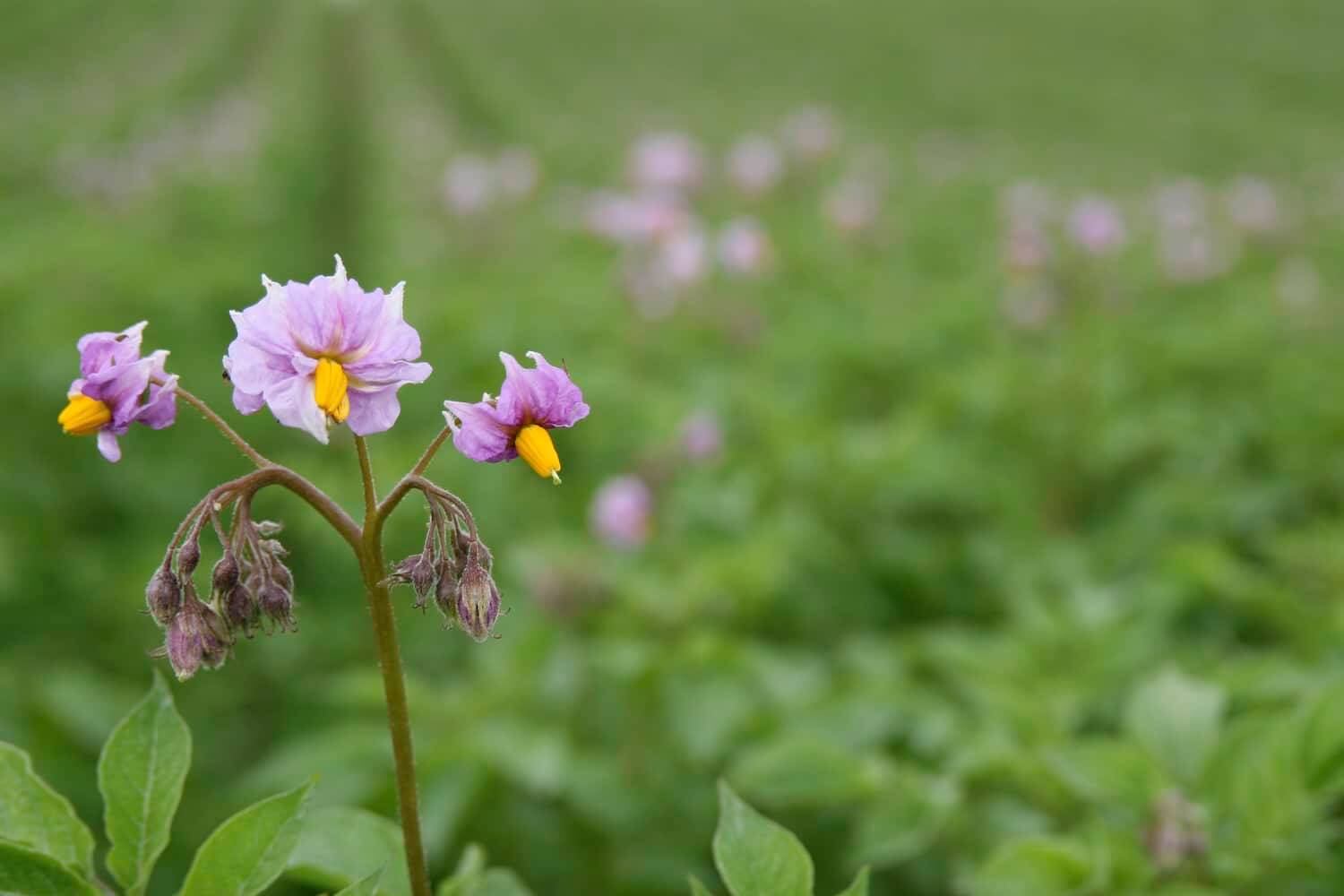Having moved from the London commuter belt to south Devon as my children flew the nest, I have become more and more interested in the interplay between people and land. I am also interested how much we have, in my view, lost rather than gained through our obsession with efficiency and immediate gratification.
So, I find myself in a long, thinnish field early on Saturday morning, with a stunning view over the Erme Estuary, awaiting instructors from the Devon Rural Skills Trust. They will lead us in a day of traditional hedge ‘steeping’ (or laying).
Before modern flail hedge trimmers, this would have been the mainstay of how our hedges were managed. Hedges were carefully laid every 15 years or so, in the local style, of which there are many; they evolved due to the makeup of the local woody species, the features of the landscape, and no doubt the whim of the hedge layers. Once laid, the hedge regenerates, and continues to provide a fantastic habitat for plants, birds, fungi, insects and mammals.
Over the next few hours, my instructor, Nick, patiently helps me and my laying buddy Adam to see the stretch of hedge we are laying in a different way. He has secured us a stretch of mostly hazel, which is relatively easy to lay. The aim is to cut through each woody stem so that the weight of the sapling bends it over parallel to the top of the bank (without breaking it off completely), then weave it into the other stems you have laid. The stem will continue to grow new shoots vertically from its horizontal position, creating a lovely stock-proof barrier – especially if you also weave in the wild roses which grow abundantly in the hedge.
Over our sandwiches at lunch, I was struck that this is how it would have been done less than my lifetime ago: 20 or so people coming together to work parts of the land and get things done. Today, Adam and others on the course who work outside (on farms or doing conservation work) say that they rarely, if ever, sit down to share lunch or coffee with anyone. Land work has become a very solitary occupation. Such a sense of shared purpose and collective satisfaction is now very rare.
This means that there are also few opportunities to pass certain skills on. It is only thanks to dedicated souls from organisations like the Devon Rural Skills Trust that we are still able to learn them – an existence which feels very fragile. A bit like the extinction of our wildlife, skills which have helped people to sympathetically manage our landscape for centuries will be lost if they are not encouraged.
ChatGPT might be able to tell us the bare facts of how it is done, but it is only by watching an expert like Nick gently lever a split trunk into a perfect bend that we can truly learn.
As dusk falls, we walk together and admire the 100 or so metres of hedge that we collectively laid today. I definitely feel a sense of achievement.
Devon Rural Skills Trust https://www.drst.org.uk/
National Hedge Laying Society https://www.hedgelaying.org.uk/












It is great to work as a group hedge laying but most contractors will work on their own or with a partner. If you have someone else working alongside you can each work your side of the hedge and you do not have to climb over it so often! Well done DRST (and the Blackdown Hills Hedging Association) for passing these skills on.